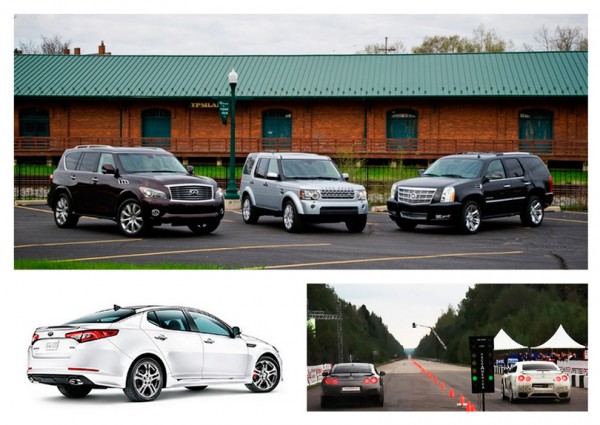As a foreigner who has been visiting Moscow for more than a decade,
and lived here for over 2 years now, I am fascinated by the Russian automotive culture.
It’s particularly interesting because of Russia’s history in the former USSR, where good cars did not really exist. At least not by today’s standards. If you like cars that you can fix with a hammer and some tape, maybe they were pretty good.
Russians gained access to the global candy store of cars relatively recently but many of them are making better informed choices than most Europeans, at least in my opinion..
The first thing you notice is an abundance of Asian brands on the roads. Kia and Hyundai for example are doing very well. And it makes perfect sense because these are extremely reliable cars and great value for money. If I had to choose between an entry level Volkswagen or a Korean car for the same money, I’ll go for the latter every time. In terms of reliability and overall quality it’s simply no contest. And it seems many Russians have clued into this pretty quickly. After suffering the trauma of communism era cars, you just want to get a car that works when you need it to.
![]()
But then again there are some who are dragging the average down. Currently on the rise, at least according to my subjective impression, are gigantic SUVs. And when I say gigantic, I mean big enough to make a Range Rover look small. Infinity QX56 and the American giants spring to mind.
Such cars might be at home on a farm in Alabama, but what on earth are they doing in a capital city with structural road issues, insane traffic and very few parking spots? I would rather take my chances on a bicycle wearing shorts than drive one of those hideous contraptions. They’re too big to leave almost anywhere, petrol stations struggle to keep the tanks full and their handling is every bit as bad as their size suggests. It’s like taking your pet elephant for a trip to the porcelain store. Not a good idea.
![]()
I genuinely struggle to understand why anyone would buy them. Maybe bigger is perceived as safer to be in, but that’s not entirely true. If 2 cars crash into each other, whoever is sitting in the smaller one will suffer a stronger impact, that much is true. It’s simple physics. But who says you’re going to run into a smaller car? What if you run into an equally large car? Or hit an immovable object? At that point your chances are worse than if you were driving a “normal” modern family size car. Crash tests don’t lie. And because these SUVs have a significantly higher center of gravity, they are much more likely to roll over. Something I think we can all agree on is not a good feature of any car. Even with modern technology these hippo-cars are so handling limited that accident avoidance is nowhere near as good as regular sized cars.
The same holds true, to a lesser extent, for Range Rovers and Cayennes. Even though they are not quite as supersized, they still have many more drawbacks than advantages. In terms of interior space, they don’t offer much extra. You might as well buy an Mercedes E class. Or an Audi A8 if it needs to be even bigger. You can get all those with all-wheel-drive as well so that’s not a selling point for the large boxes on wheels either. In fact the only good reason for getting one would have to be if you live in a rural area where you need the ground clearance. That’s not really the case here in Moscow. Sitting high up in an SUV will just give you an even more depressing vantage point to observe just how long the traffic jam is.
So don’t buy a BMW X6, get a 5 series Touring instead. Don’t buy a Cayenne, get a Panamera or if you’re usually driving alone… why not a 911? Don’t buy a Chevy Tahoe, just get a T-shirt made that says «I know nothing about cars» and use a regular car plus a chauffeur to drive it for you.
At the other end of the scale we have Russians that do love cars, fast ones, and get slightly carried away with it. I submit in evidence the good people who attend and organize the «Moscow unlim 500».
![]()
Their weapons of choice are usually Nissan GTRs, Porsche 911 turbos and various overpowered American musclecars. Their machines had more than enough power straight from the factory, but then they went ahead and spent millions of rubles on making them a bit faster. Well when I say a bit, I mean a lot. If your car isn’t topping well above 300 km/h at the standing mile you’re not really competing. With a bit of searching you can find some of them reaching speeds in excess of 360 km/h on the Russian highways in the middle of the night. Evidently these are the kind of people who, after witnessing the detonation of a thermonuclear device would go «hmm, it could use a bit more kick».
So really, for me the Russian car scene is one of extremes. The extremely sensible, the extremely uninformed, and those who get carried away — extremely so. I guess it’s in this country’s nature. Even winter and summer seem to be competing here for the title of most extremely uncomfortable season. I think winter is winning, by the way.











